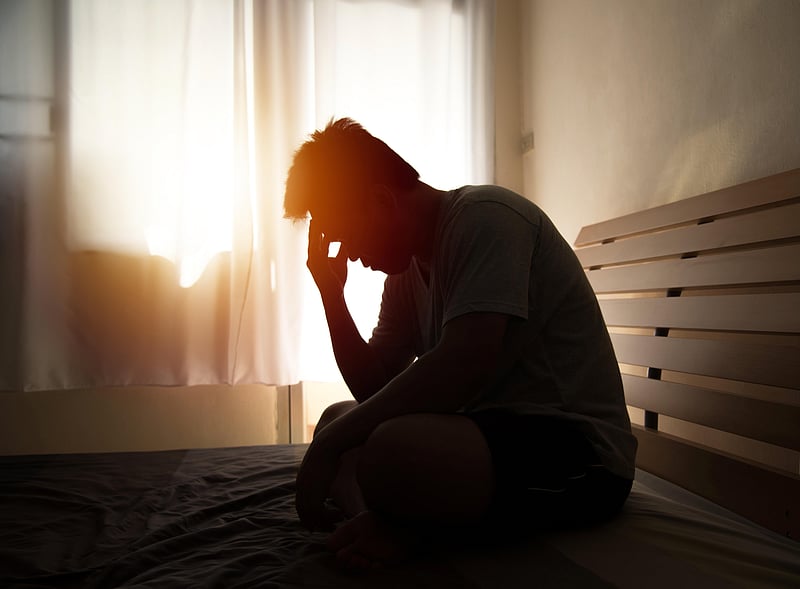Manténgase sano!

- Posted August 10, 2023
People With Autism Face Much Higher Risk for Self-Harm, Suicide
People with autism are over three times more likely than their peers without the developmental disorder to experience self-injury, suicidal ideation, suicide attempt, or death by suicide, new research shows.
"In general, I think there needs to be more support for individuals with autism. And this shows that there are life-threatening consequences in terms of suicide and self-harm,"said Alycia Halladay, chief science officer for the Autism Science Foundation. She was not involved in the study.
The researchers agreed.
"The presence of psychiatric illnesses substantially accounts for these increased risks,"said lead study author Dr. Meng-Chuan Lai, staff psychiatrist and clinician scientist with the Child and Youth Mental Health Collaborative at the Centre for Addiction and Mental Health (CAMH) at the University of Toronto.
"We know that many self-harm and suicide-related events could be prevented when people have access to tailored mental health supports and services, and this is crucial for autistic people," he said in a CAMH news release.
Patient Megan Pilatzke is an advocate and a woman living with autism.
"Autistic people are continually forced to mask and hide who we are to accommodate a world that generally does not accept our traits,"Pilatzke said in the release. "I want people to understand that autistic people are struggling because our needs are just not being met throughout society."
Broken down by gender, females with autism in the study had an 83% increased risk of self-harm, while males had a 47% increased risk. These findings accounted for neighborhood income and location, intellectual disabilities and psychiatric diagnoses.
The research also showed that, for suicide deaths, females with autism had a 98% increased risk and males with autism had a 34% increased risk, which were associated with psychiatric diagnoses. The study also found that a quarter of young people with autism experience suicidal ideation, and 8.3% attempt suicide.
For the study, Lai and his team used health administrative databases in Ontario, Canada, looking at nearly 380,000 individuals for incidence of self-harm and almost 335,000 individuals for death by suicide. The first group of autistic and non-autistic individuals were followed from 2005 to 2020 for self-harm events that resulted in emergency care. The second group were followed from 1993 to 2018 for death by suicide.
Halladay thinks the numbers could be even starker than the findings suggest.
"The only reason a study of this size was able to be done is because they looked into the health care system, right?"she noted. "That being said, there may be cases of self-harm or even suicide that may not be reported. There's still the stigma around suicide. And so while this is a great study, it probably isn't a thousand percent accurate because it's only what's reported to the system. I think it may actually under-represent the scope of the problem."
The U.S. Centers for Disease Control and Prevention estimates that 1 in 36 children in this country have autism. The condition refers to a wide range of conditions characterized by challenges with social skills, repetitive behaviors, speech and nonverbal communication.
Trying to fit in with everyone else could be part of the problem, Halladay noted, especially for girls, who were shown to be the most at risk for self-harm.
"A lot of girls with autism are able to mask their symptoms. So they literally pretend like they don't have autism in order to fit in. And this has been shown to have a significant impact on quality of life," she explained. She also cited stigma and inability to connect with peers during critical points of development as reasons people with autism could be at increased risk.
Lai suggested ways to address the problem.
"Our health care system should take a two-pronged approach to support autistic people, enhancing access to mental health services, and autism-informed accommodations for those services," Lai said. "For example, we can support autistic individuals who come into the health care settings by offering calming spaces, providing maximal predictability possible, understanding their communication styles and preferences, meeting their sensory needs, and supporting them if they wish to come accompanied by a person they trust."
The study's findings were published Aug. 8 in the journal JAMA Network Open.
More information:
For more on autism, visit Autism Speaks.
SOURCES: Alycia Halladay, PhD, chief science officer, Autism Science Foundation; Center for Addiction and Mental Health (CAMH), University of Toronto news release, Aug. 8, 2023; JAMA Network Open, Aug. 8, 2023, online






